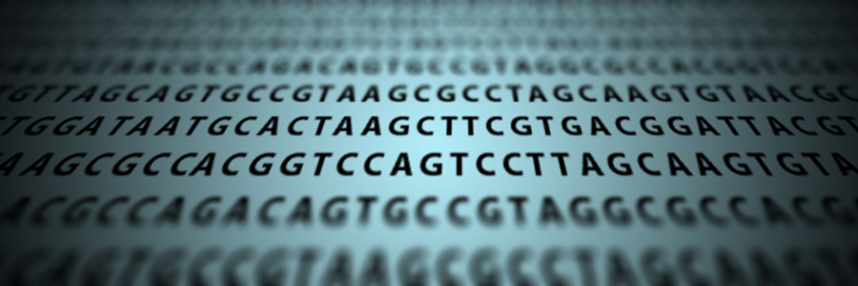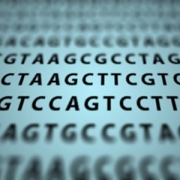CRISPR: From ‘silly idea’ to miracle cures?
Editing a person’s genome is a high-stakes proposition. Dr Alain Li Wan Po looks at the science behind it and the ethical issues at play
Every biology student knows that James Watson and Francis Crick were awarded a Nobel Prize in Medicine (1962) for their discovery of the double-helical structure of DNA, writes Dr Alain Li Wan Po.
However, probably fewer would know that François Jacob, André Lwoff and Jacques Monod were also awarded a Nobel Prize three years later ‘for their discoveries concerning genetic control of enzyme and virus synthesis’. During the 1950s, both the MRC Laboratory of Molecular Biology in Cambridge where Crick was, and The Pasteur Institute in Paris where Monod worked, were busy defining molecular biology.
The silly idea
Francis Crick was visiting Jacques Monod’s laboratory on a Saturday morning, sometime after his discovery of the double-helical structure of DNA, when he was greeted by the latter with: “You’ll never guess what I’m trying, my dear”. In Crick’s words, Monod “was attempting, in a way that I cannot recall, to see if he could get some sort of an immune response from E.coli. I thought it was a silly idea and clearly so did he, but I was impressed that he was prepared to give it a try. It seemed to show a commendable spirit of adventure.”
Although Monod did not make much progress in this specific search, his ‘silly idea’ is now very much the centre stage of molecular genetic engineering and the search for tomorrow’s ‘miracle’ cures.
The critical discoveries and insights
Almost three decades ago, researchers at Osaka University were investigating a gene that encoded an enzyme, itself associated with the formation of variants of another enzyme, alkaline phosphatase, by the bacterium E.coli. Sequencing showed that a non-protein-coding region of the gene included a novel type of short repetitive sequences. The authors were sufficiently intrigued by this unusual feature to report it in some detail. However, they admitted that the biological significance of these sequences was not clear, although other unrelated bacterial repeat sequences were known to increase the stability of messenger RNA.
The mystery remained for almost two decades until similar sequences were identified as elements that flanked short sequences of foreign genetic elements in many other prokaryotes (bacteria and archaea; unicellular organisms with no nucleus). Their molecular features led to those sequences being called ‘clustered regularly interspaced short palindromic repeats’ (CRISPR). A palindrome is of course simply a word or phrase that reads the same backward and forward. These discoveries led to the theory that the acquired genetic elements formed part of the adaptive immune system of prokaryotes.
Mechanism and application
The mechanism by which the CRISPR operates as an adaptive immune system (see author’s previous blog) is by capturing DNA fragments of invaders as spacers. The transcribed messenger RNA can then act as a highly specific postcode to home in onto the invaders’ DNA when they reappear. For the attack, the RNA guides a nucleic-acid-cleaving enzyme (CRISPR-associated protein or Cas) to the invader to destroy its genome, while recognising and sparing ‘self’ DNA.
It did not take long for the enormous translational potential to be recognised for genome editing, and the potential applications are mind-boggling. Quite aside from the many hundreds of monogenic diseases that could be treated via CRISPR-Cas therapy, there are also major potential applications in agriculture and animal husbandry. The editing of several genomic loci simultaneously (multiplexing) might one day even make application of the technique to more complex, polygenic disease feasible. The RNA-postcoding can also be used to guide other types of enzymes to specific targets.
Charting the way ahead
CRISPR-Cas technology builds on the first genetic engineering revolution. Exactly 40 years ago, a group of molecular biologists and some bioethicists met at a conference, Asilomar, to discuss recombinant technology. They aimed to address the considerable concerns that various stakeholders, including some leading researchers, had about the safety of the new technology. The group discussed the framework that might be required to regulate work in this area and developed voluntary guidelines for the safe use of this technology. It is reassuring that recombinant technology has since been shown to be overwhelmingly beneficial.
However, the realistic potential for therapeutic germline editing (creating heritable genetic changes that would be passed on to an individual’s offspring), made possible by CRISPR-Cas worries many, including leading scientists, prompting recent calls for fresh debate on the ethics of human genetic modification.
Perhaps reassured by the earlier success of recombinant technology, the British parliament recently approved legal changes to permit mitochondrial transplantation, another germline intervention that affects not only the subject but also their progeny.
Earlier this year, a group of researchers led by the same Asilomar organisers (Paul Berg and David Baltimore) met in Napa, California to discuss the wider implications of CRISPR-Cas. Given the simplicity of the technology, many nations with different norms of ethics can be expected to use it for different purposes.
The scientific and economic stakes are high, as there is no doubt that Nobel Prizes and high-value therapeutics will emerge from this technology, which has already been shown to work in-vivo in a variety of animals including primates. Will wisdom prevail under this dizzying mix of expert and public priorities and perspectives?
Alain Li Wan Po is editor-in-chief of the Journal of Clinical Pharmacy and Therapeutics, and is a fellow of the Royal Pharmaceutical Society and the Royal Statistical Society.
Mitochondrial replacement and CRISPR-Cas are discussed in further detail by the author in Genomic Medicine 101 Keynotes and Concepts and ‘The human genome: its modifications and interactions with those of the microbiome, and the practice of genomic medicine’.
–









